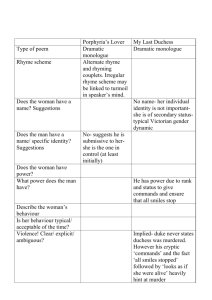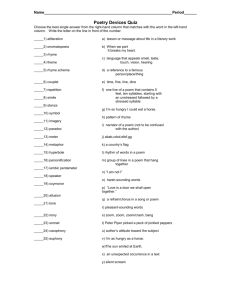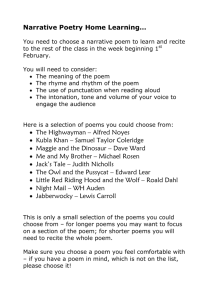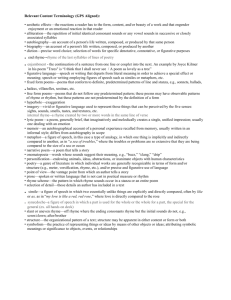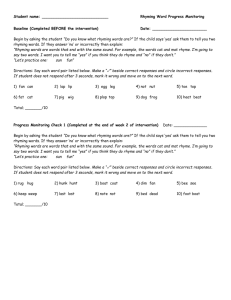Write Narrative Poems for Kids: A Simple Guide
advertisement
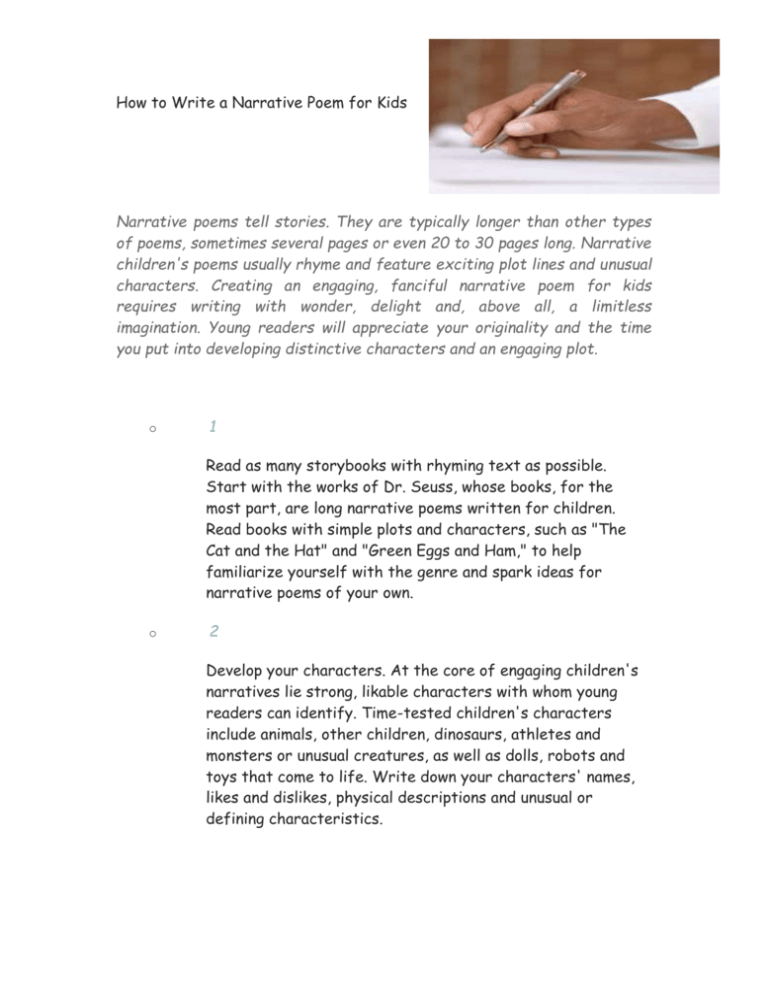
How to Write a Narrative Poem for Kids Narrative poems tell stories. They are typically longer than other types of poems, sometimes several pages or even 20 to 30 pages long. Narrative children's poems usually rhyme and feature exciting plot lines and unusual characters. Creating an engaging, fanciful narrative poem for kids requires writing with wonder, delight and, above all, a limitless imagination. Young readers will appreciate your originality and the time you put into developing distinctive characters and an engaging plot. o 1 Read as many storybooks with rhyming text as possible. Start with the works of Dr. Seuss, whose books, for the most part, are long narrative poems written for children. Read books with simple plots and characters, such as "The Cat and the Hat" and "Green Eggs and Ham," to help familiarize yourself with the genre and spark ideas for narrative poems of your own. o 2 Develop your characters. At the core of engaging children's narratives lie strong, likable characters with whom young readers can identify. Time-tested children's characters include animals, other children, dinosaurs, athletes and monsters or unusual creatures, as well as dolls, robots and toys that come to life. Write down your characters' names, likes and dislikes, physical descriptions and unusual or defining characteristics. 3 Make a short outline of your plot, to which you'll refer as you write your poem. If your poem is for toddlers or preschoolers, keep your plot very simple. Older children will enjoy more twists, turns and action. Try to recall the types of stories you read and enjoyed as a child, and create conflicts that the protagonist(s) must surmount. o 4 Choose a rhyme scheme--your pattern of rhyming lines--for the poem. You can use rhyming couplets, or every other line can rhyme. Other rhyme schemes include "abba," in which the first and fourth lines and the second and third lines rhyme, and "abcb," in which the second and fourth lines rhyme. Whichever scheme you choose, be consistent from start to finish. o 5 Write your poem. Include dialogue, which will engage children and give your characters life and personality. Use as many specific, descriptive words as possible. Don't worry that young readers may not understand complex words; often they can figure out meaning from context. Avoid using words that are vague or overused, including "good," "bad," "great" or "beautiful." Consult a thesaurus and a rhyming dictionary, both of which you can find at most bookstores or online.





